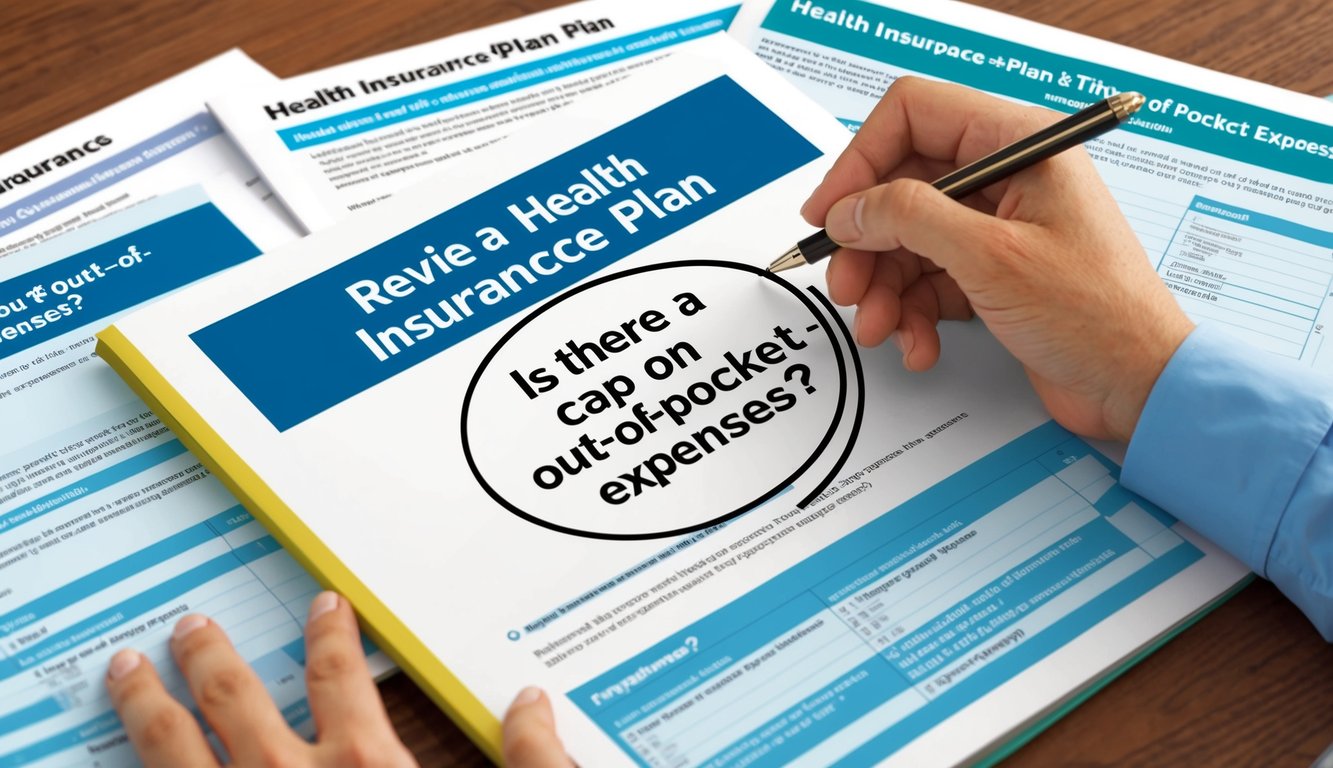Choosing a health insurance plan can be overwhelming.
There are numerous options available, so you need to carefully evaluate each plan to find the best fit for your needs and budget.
Taking the time to ask the right questions can help you make an informed decision that provides adequate coverage and financial protection.
By considering key factors such as coverage limits, network providers, and out-of-pocket costs, you can select a plan that aligns with your healthcare requirements and financial situation. This article will guide you through 10 essential questions to ask when comparing health insurance plans, empowering you to make a choice that offers both comprehensive coverage and peace of mind.
1) What does this plan cover?
When selecting a health insurance plan, understanding its coverage is crucial. Ask about the specific services and treatments included in the plan.
This information will help you determine if it meets your healthcare needs.
Check if the plan covers preventive care, such as annual check-ups, vaccinations, and screenings.
These services are often essential for maintaining good health and catching potential issues early.
Inquire about coverage for prescription medications.
Some plans may have a separate prescription drug benefit, while others include it in the overall coverage.
Make sure your current medications are covered.
Look into coverage for specialist visits, laboratory tests, and imaging services.
These can be costly if not adequately covered by your insurance plan.
Ask about coverage for mental health services, including therapy and counseling.
Mental health care is an important aspect of overall well-being.
Investigate coverage for emergency services and hospital stays.
Understanding these benefits can provide peace of mind in case of unexpected health issues.
Inquire about coverage for chronic condition management, such as diabetes or asthma.
If you have any ongoing health concerns, ensure the plan provides adequate support.
Check if the plan covers alternative treatments or complementary medicine if these are important to you.
Some plans may offer coverage for services like acupuncture or chiropractic care.
2) What are the monthly premiums?
Monthly premiums are the fixed amount you pay each month for your health insurance coverage.
These payments are crucial to understand when choosing a health insurance plan.
Premiums can vary significantly between different plans and providers.
Generally, plans with lower monthly premiums tend to have higher out-of-pocket costs when you need medical care.
Conversely, plans with higher monthly premiums often offer more comprehensive coverage and lower out-of-pocket expenses.
It’s important to consider your budget and anticipated healthcare needs when evaluating premium costs.
Keep in mind that your age, location, and tobacco use can affect your premium rates.
Some plans may offer discounts for non-smokers or those who participate in wellness programs.
If you’re employed, your employer might contribute to your premium costs.
Be sure to factor in this contribution when comparing plans.
For those with lower incomes, you may qualify for premium subsidies through the Health Insurance Marketplace.
These subsidies can significantly reduce your monthly premium costs.
3) Are my preferred doctors in-network?
Checking if your preferred doctors are in-network is crucial when selecting a health insurance plan.
In-network providers have agreements with your insurance company, which often results in lower out-of-pocket costs for you.
Start by making a list of your current doctors and any specialists you see regularly.
This includes your primary care physician, dentist, and any other healthcare providers you visit frequently.
Contact your insurance company or visit their website to search for these providers in their network directory.
Many insurers offer online tools to check provider networks.
If your preferred doctors aren’t in-network, consider the impact on your healthcare.
You may face higher costs or need to switch to new providers if you choose that plan.
Some plans offer out-of-network coverage, but it typically comes with higher copayments or coinsurance.
Weigh these potential costs against the benefits of staying with your current doctors.
Remember that provider networks can change.
It’s a good idea to verify your doctors’ network status annually, even if you’re not switching plans.
If you’re moving to a new area, research the available providers in that location.
This can help you choose a plan with a network that includes quality healthcare professionals near your new home.
4) What are the out-of-pocket costs?
When selecting a health insurance plan, it’s crucial to understand your potential out-of-pocket costs.
These are expenses you’ll need to pay in addition to your monthly premium.
Start by looking at the plan’s deductible.
This is the amount you’ll need to pay for covered services before your insurance starts to contribute. Deductibles can vary significantly between plans, so consider how much you can afford to pay upfront.
Next, examine the copayments and coinsurance.
Copayments are fixed amounts you pay for specific services, like doctor visits or prescriptions.
Coinsurance is a percentage of the cost you’re responsible for after meeting your deductible.
Don’t forget to check the plan’s out-of-pocket maximum.
This is the most you’ll have to pay for covered services in a year.
Once you reach this limit, your insurance will cover 100% of eligible expenses.
Consider your typical healthcare needs when evaluating these costs.
If you frequently visit doctors or take regular medications, a plan with lower copayments might be beneficial.
Remember that preventive care is often covered at no cost to you, regardless of whether you’ve met your deductible.
This includes services like annual check-ups and certain screenings.
By carefully reviewing these out-of-pocket costs, you can better estimate your total healthcare expenses for the year and choose a plan that fits your budget and healthcare needs.
5) Does the plan cover my medications?

Prescription drug coverage is a crucial aspect of health insurance plans.
You need to check if your current medications are included in the plan’s formulary, which is a list of covered drugs.
Different plans may cover different medications.
Some plans might require prior authorization for certain drugs or have restrictions on brand-name medications.
Ask about the plan’s tiers for prescription drugs.
Lower tiers usually have lower copayments, while higher tiers may require you to pay more out-of-pocket.
Inquire about the plan’s policies on generic substitutions.
Many insurers encourage the use of generic drugs to keep costs down.
Check if the plan covers any specialty medications you might need.
These are often expensive and may have specific coverage rules.
Find out if there are any limitations on the quantity of medication you can receive at one time.
Some plans restrict the amount of medication you can get per prescription.
Ask about mail-order pharmacy options.
These can often provide a three-month supply of medication at a lower cost than monthly refills at a local pharmacy.
If you take multiple medications, look into whether the plan offers medication therapy management services.
These programs can help you manage your prescriptions more effectively.
Remember to review the plan’s drug coverage annually, as formularies can change from year to year.
This helps ensure your medications remain covered and affordable.
6) Are there any additional benefits?

When selecting a health insurance plan, it’s crucial to look beyond the basic coverage.
Many plans offer additional benefits that can provide extra value and support for your health needs.
Check if the plan includes wellness programs or gym membership discounts.
These perks can help you maintain a healthy lifestyle and potentially reduce your healthcare costs in the long run.
Some plans offer telemedicine services, allowing you to consult with healthcare professionals remotely.
This can be convenient for minor health concerns or follow-up appointments.
Dental and vision coverage are often overlooked but important benefits.
Determine if these are included or if you need to purchase separate policies.
Mental health services are another crucial aspect to consider.
Look for plans that offer comprehensive mental health coverage, including therapy and counseling sessions.
Some insurers provide prescription drug discount programs or mail-order pharmacy services.
These can help you save money on medications you take regularly.
Maternity care, fertility treatments, and pediatric services may be important if you’re planning to start or expand your family.
Check if these are covered and to what extent.
Travel insurance or coverage for out-of-network care can be valuable if you frequently travel or live in an area with limited in-network providers.
Remember to review the specifics of each additional benefit.
Understanding the terms and conditions will help you make the most of these extras and ensure they align with your health needs.
7) How does the plan handle emergencies?

Emergency care coverage is a crucial aspect of any health insurance plan.
You should understand how your plan handles unexpected medical situations that require immediate attention.
Most plans allow you to see an out-of-network provider for emergency care without penalty.
However, some may require you to use an in-network emergency department for full coverage.
Some plans also have a co-payment for emergency services.
Ask about the plan’s definition of an emergency as this can affect what services are covered and how much you’ll pay out-of-pocket.
Inquire about the co-payment for emergency services.
Some plans charge a flat fee, while others may have a percentage-based coinsurance.
Find out if your plan requires pre-authorization for emergency care.
In true emergencies, this is often waived, but it’s important to know the policy.
Ask about coverage for ambulance services as well, as some plans may have specific rules or limitations for this type of transportation.
Understand how the plan handles follow-up care after an emergency.
This can include specialist visits, rehabilitation, or ongoing treatment related to the emergency.
Consider the locations of in-network emergency facilities in relation to your home and work.
This can be crucial in time-sensitive situations.
8) What are the deductibles?

Deductibles are the amount you must pay out-of-pocket for covered health services before your insurance starts to contribute.
This is a crucial factor to consider when choosing a health insurance plan.
Different plans have varying deductible amounts.
Generally, plans with lower monthly premiums tend to have higher deductibles, while those with higher premiums often have lower deductibles.
You should evaluate your health needs and financial situation when considering deductibles.
If you rarely need medical care, a higher deductible plan might be suitable.
However, if you require frequent medical attention, a lower deductible could be more beneficial.
Some plans offer separate deductibles for different types of services.
For example, there might be one deductible for medical services and another for prescription drugs.
It’s important to understand how your deductible works with other cost-sharing elements of your plan, such as copayments and coinsurance.
These factors together determine your total out-of-pocket expenses.
Remember that preventive services are often covered without requiring you to meet your deductible first.
This includes annual check-ups, vaccinations, and certain screenings.
When comparing plans, consider how quickly you might reach the deductible based on your expected healthcare needs.
This can help you determine which plan offers the best value for your situation.
9) Is there a cap on out-of-pocket expenses?

When selecting a health insurance plan, it’s crucial to consider the out-of-pocket maximum.
This cap limits the amount you’ll have to pay for covered services in a plan year.
Most health insurance plans, including Medicare Advantage, have an out-of-pocket maximum.
For Medicare Advantage plans in 2024, the limit is $8,850 or less for in-network services.
Check if your plan has separate in-network and out-of-network out-of-pocket maximums.
Some plans may have a combined limit for both, which could be higher.
Keep in mind that not all expenses count towards the out-of-pocket maximum.
Premiums, for example, are typically not included.
For prescription drug coverage, Medicare Part D plans will have a $2,000 out-of-pocket maximum starting in 2025.
This can significantly reduce your costs for medications.
If you’re considering a Medigap plan, some policies offer out-of-pocket maximums as well.
These can provide additional financial protection.
A lower out-of-pocket maximum often means higher monthly premiums.
Consider your health needs and budget when choosing a plan with the right balance for you.
10) What is the policy on pre-existing conditions?

When choosing a health insurance plan, it’s crucial to understand its policy on pre-existing conditions. A pre-existing condition is a health issue you had before the start date of your new insurance coverage.
Good news: health insurance companies cannot deny you coverage or charge more due to pre-existing conditions.
This protection is a result of the Affordable Care Act (ACA).
Pre-existing conditions can include a wide range of health issues. Diabetes, asthma, cancer, and even pregnancy are considered pre-existing conditions.
When reviewing a plan, check if it covers all essential health benefits.
These benefits should include treatment for your pre-existing conditions without any waiting periods or coverage exclusions.
Be aware that all Marketplace plans must cover treatment for pre-existing medical conditions.
This coverage begins on the first day your policy starts.
It’s important to disclose any pre-existing conditions when applying for insurance.
This ensures you receive appropriate coverage and avoid any potential issues with claims in the future.
Your health history shouldn’t be a barrier to obtaining comprehensive insurance coverage.
The right plan will provide the care you need, regardless of pre-existing conditions.
Understanding Health Insurance Plans
Health insurance plans come in various types, each with unique features and benefits.
Familiarizing yourself with common insurance terms will help you make informed decisions when selecting a plan.
Types of Health Insurance Plans
Health Maintenance Organizations (HMOs) offer lower costs but restrict you to a network of providers.
You’ll need a primary care physician referral to see specialists.
Preferred Provider Organizations (PPOs) provide more flexibility.
You can see out-of-network doctors, but at a higher cost.
No referrals are needed for specialists.
Exclusive Provider Organizations (EPOs) combine features of HMOs and PPOs.
They offer a network of providers like HMOs but don’t require referrals for specialists.
Point of Service (POS) plans blend HMO and PPO features.
You’ll have a primary care doctor and need referrals, but can see out-of-network providers at a higher cost.
Key Health Insurance Terminologies
Premium: The amount you pay monthly for your insurance coverage.
Deductible: The amount you must pay before your insurance starts covering costs.
Copayment: A fixed amount you pay for certain services, like doctor visits or prescriptions.
Coinsurance: The percentage of costs you pay after meeting your deductible.
Out-of-pocket maximum: The most you’ll pay in a year for covered services.
Network: A group of healthcare providers contracted with your insurance plan.
Understanding these terms will help you compare health plans and choose the one that best fits your needs and budget.
Evaluating Coverage and Benefits
When selecting a health insurance plan, carefully examine the coverage and benefits offered.
Understanding the specifics of in-network and out-of-network coverage, as well as essential health benefits, will help you make an informed decision.
In-Network vs Out-of-Network Coverage
Health plans usually have a network of providers in their plan.
These include doctors, hospitals, clinics, labs, and sometimes pharmacies.
In-network providers have contracted rates with your insurance company, resulting in lower out-of-pocket costs for you.
Out-of-network providers, on the other hand, may lead to higher expenses.
Before choosing a plan, consider:
- Does your preferred doctor or specialist belong to the network?
- Are nearby hospitals and urgent care facilities in-network?
- How much will you pay for out-of-network care if needed?
Remember, some plans offer no coverage for out-of-network care, while others provide partial coverage.
Review these details carefully to avoid unexpected costs.
Essential Health Benefits
Health insurance plans must cover certain essential health benefits.
These typically include:
- Preventive care
- Emergency services
- Hospitalization
- Prescription drugs
- Mental health and substance abuse treatment
Review the specific coverage for each benefit.
Some questions to consider:
- What preventive services are fully covered?
- Is there a limit on hospital stays?
- Are your current medications covered, and at what cost?
Pay attention to any coverage limits or exclusions.
Some plans may offer additional benefits beyond the essentials, such as dental or vision care.
Evaluate these extras based on your personal health needs and budget.
Financial Considerations
Understanding the financial aspects of health insurance plans is crucial for making an informed decision.
Evaluating costs and potential savings options can significantly impact your overall healthcare expenses.
Premiums, Deductibles, and Out-of-Pocket Costs
When comparing health insurance plans, focus on three key financial components: premiums, deductibles, and out-of-pocket costs. Premiums are the monthly fees you pay for coverage, regardless of whether you use medical services.
Deductibles represent the amount you must pay before your insurance starts covering expenses.
Higher deductibles often mean lower premiums, but you’ll pay more upfront for care.
Out-of-pocket costs include copayments and coinsurance.
Copayments are fixed amounts for specific services, while coinsurance is a percentage of the total cost.
Be sure to check the plan’s out-of-pocket maximum, which caps your annual expenses.
Consider your health needs and budget when balancing these costs.
A plan with lower premiums might seem attractive, but could result in higher overall expenses if you require frequent medical care.
Health Savings Accounts (HSAs) and Flexible Spending Accounts (FSAs)
HSAs and FSAs are tax-advantaged accounts that can help you save money on healthcare expenses.
HSAs are available with high-deductible health plans and offer triple tax benefits: tax-deductible contributions, tax-free growth, and tax-free withdrawals for qualified medical expenses.
FSAs allow you to set aside pre-tax dollars for healthcare costs, but funds typically must be used within the plan year. Check if your employer offers matching contributions to these accounts, as this can provide additional savings.
When choosing between plans, consider how these accounts align with your healthcare needs and financial goals.
HSAs can be particularly beneficial for long-term savings, while FSAs offer immediate tax savings for predictable healthcare expenses.






